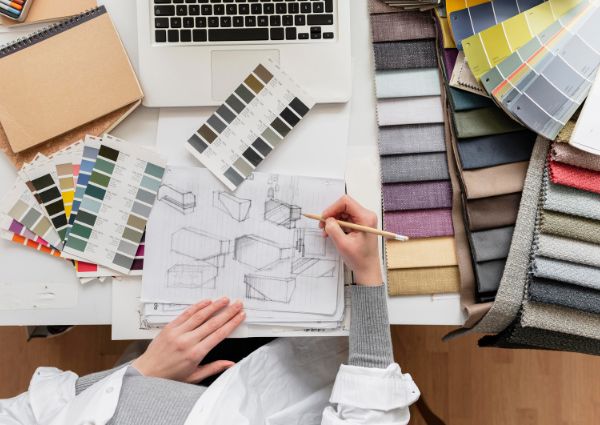7 Principles of Interior Designing
In this article, you will know about the 7 Principles of Interior Designing. We will also make use of these terms in relation to your project and the finishes, fixtures, and furniture we are proposing.
They can give a sense of calmness, or at least play a role in limiting chaos in our workplaces, and can also adjoin the comfort level of a room.
Principles of Interior Designing
1. Unity and Harmony :
It explains that there has to be a sense of consistency or harmony among the elements used in the design. This includes similarity of color/pattern/texture, the proximity of objects, and repetition of elements continuation and overlapping of the interior design elements.
Harmony and unity are two words that designers often use to describe the emotion of a space.
2. Balance :
Symmetrical, asymmetrical and radial are 3 ways to achieve balance. The principle of balance tells that the ordered distribution of elements of equal weight to create a visual equilibrium is extremely vital.
Creating balance in a room or a complete home is all about symmetry. Humans love symmetry, and we always have a preference to spend time in a symmetrical and orderly space versus a cluttered and chaotic one.
When it comes to interior design, some rooms advantage from extremely symmetric designs, and others benefit from more of symmetrical distribution of weight.
3. Rhythm :
It means a linked movement between different elements of the interior design. This defines the optical tempo between the elements of variable visual weight. Rhythm can be achieved by 3 ways alternation, repetition, and progression.
Many people believe that rhythm is covert to a successful design. It’s the thing that gives top-end interiors that additional hint of polish, and if you can’t quite place why your design feels as though it hasn’t really come together, it’s likely the root of your dilemma.
4. Emphasis :

This principle says that a central piece of art or furniture must play the role of a focal point or the focal point in a defined living space. The emphasis can be controlled by basics like color, pattern or texture.Looking For
Home Interior Designer in Dwarka
5. Contrast :
the dissimilarity in the luminance or the color of the object/furniture that differentiates from one another is called as the contrast in interior design. Contrast can be attained by combining two or more forms such as a circular mirror and a rectangular sofa to balance.
6. Scale and Proportion :
 These play a key role in creating harmony in interior design. In simpler language, this principle states that objects placed in space must look like they are made for each other and contribute to the balance of the space.
These play a key role in creating harmony in interior design. In simpler language, this principle states that objects placed in space must look like they are made for each other and contribute to the balance of the space.
7.Details :
Last but not least, the principle of the details which is much like the cherry on the top. The information includes embroideries on a pillow cover or a pattern on the center table legs.
Once all the above principles are followed and attained, the details enhance the beauty of these designs and objects.

Looking For Interior Decorator In Dwarka ?
Contact us : 9873761762
